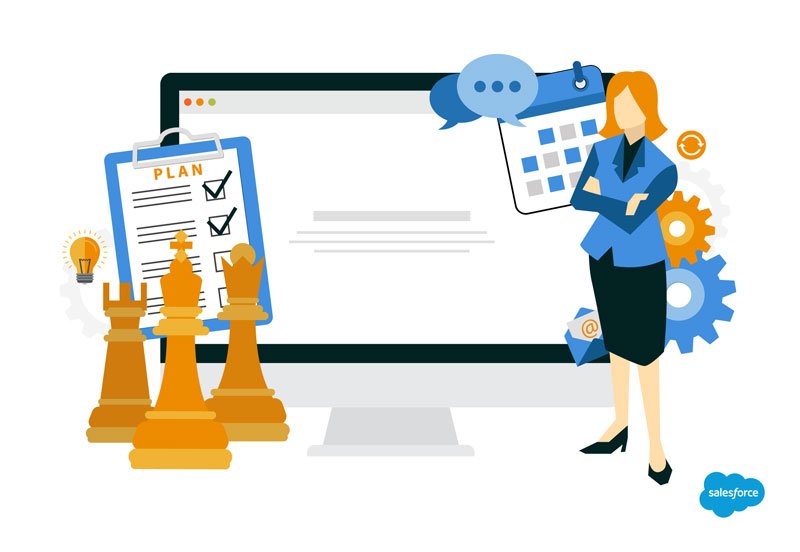What Is a Go-to-Market Strategy? (And Why You Need It to Beat Your Competition)

Learn how to create a go-to-market framework to turn your product ideas into growth opportunities for your company.
Imagine a world where you create a new product that everyone wants. It’s a snap to make and it sells itself - a mega hit. Congratulations, you’ve smashed your goals!
In this world, there is no overnight success. If you sell a product without attracting the right buyers and demonstrating how it meets their needs, it may just sit on the shelf. Meanwhile, a competitor does their research, knows what buyers want, and delivers it. Not only have you lost revenue, you’ve lost potential customers to the competition. Ouch.
How do you avoid this and capture customer interest? Build a comprehensive go-to-market (GTM) strategy that combines careful research with tailored messaging that hits on the right buyer pain points.
What is a go-to-market strategy?
A go-to-market strategy is a step-by-step plan for introducing a new product to buyers. This includes market, customer, and competitive research that uncovers problems your product can solve. Creating a buyer persona lets you target prospects with key messaging that emphasizes your product’s unique problem-solving value.
Why is a go-to-market strategy important?
A well-crafted GTM strategy ensures target buyers see your product, understand and appreciate its value, and are compelled to buy. As Howard Brown, CEO of Revenue.io put it, “Meeting expectations early and often builds trust and is the foundation of any successful partnership.”
You can launch a product without a go-to-market strategy, but buyers who really need your product might not see or appreciate its value. They might turn to competitors who are already established in the marketplace and are perceived to be stable. In the early stage, it’s normal for someone to see your solution and say, “Oh, you’re just like [competitor],” even if they don’t offer what you offer. Research bears this out, especially for smaller companies. Of startups that fail, more than a third do so because there was no identified market need.
How to build a go-to-market strategy framework
A successful go-to-market strategy requires understanding your market, prioritizing buyers’ pains, and identifying your competitive advantage. Building a framework around these four elements can help deliver your product in a way that makes it “ready to buy.” Let’s run through how to do that in six steps.
1. Create your buyer persona
Selling is about delivering value to your target buyer, and that often takes the form of a solution to a unique problem. To make sure you’re targeting the right problem, build out a buyer persona that connects their pain points to your solution.
To surface this detail, you’ll start with your existing customers. Dig into customer data in your CRM, conduct interviews with buyers whose problems you’ve solved, and lead market research efforts to see where else these needs surface in your industry. (Check out our comprehensive guide on buyer personas for more guidance.)
If you sell B2B, your team will likely be coordinating a purchase with multiple people at each prospective company. The buying group might include end users, the CFO, an operations lead, and so on. Make sure you include problems and needs for these roles in your buyer persona.
2. Conduct competitive research
Going to market with a new product isn’t just about making sure you solve prospects’ problems. It’s also about separating yourself from the crowd of products already in the market. To make sure you’re delivering unique value, conduct research on competitors with similar products to see how they’re positioned. Use these questions to guide you:
- What similar products are already in the market?
- What do you offer (features, price, functionality) that your competitors don’t?
- If a competitor’s product is popular, why is it resonating with customers? How can you use that information to frame your own messaging?
If you have an AI-powered CRM, you can likely offload some of this research. Use AI tools to scan sales call transcripts for competitor mentions and pricing information. Pair this with automated online research based on industry, competitor, and product keywords. (Here’s how Sales Cloud does this.)
3. Map customer problems to your product solutions
You know your target buyer’s problems. You know what competitors are doing to solve those problems. And, you know what your product offers. It’s time to connect all three and deliver a high-value solution that’s unique in your market. Build out a simple matrix so you can see all three and how they connect. Here’s what this might look like:
Product: Long-lasting, high-performance running shoes with extra arch support priced 20% below similar products
Example buyer: Casual runner, mid-40s, median income
Buyer problem
Ex. Common running injuries make it hard to find well-fitting, supportive running shoes without getting something custom-made
Ex. High-quality running shoes with needed support are too expensive ($100+)
Your product solution
Ex. High-quality running shoes with needed support are too expensive ($100+)
Ex. All running shoes in product line are $80 or less
[Competitor] solution
Ex. Running shoes with arch support, but no ankle support. Only available in the US.
Ex. Some running shoes are <$80, but don’t offer extra support or longevity
To keep the focus on the buyer during this value mapping, review your matrix and ask: “How would my target buyer see or understand this?” That’s a good gut check before you frame your messaging.
4. Develop key messaging for marketing and sales efforts
Using your matrix from the previous step, draft messaging for each prospect problem that shows why your product is uniquely qualified to serve as a solution with proof points to back it up.
Let’s continue with the example of our shoe buyer. You know from your research that they are between the ages of 40 and 50, like to run as a hobby, and want to stay active despite minor injuries. But, they’re also price-conscious. Here’s what key messaging might look like for this target buyer:
- Problem: Their feet hurt when they run, likely due to prior injuries, muscle strain, or bad shoes.
- Product value: A pair of running shoes designed with input from an orthopedic surgeon, with research that finds 60% of wearers felt less foot pain after a month.
- What competitors offer: Some shoe brands advertise “extra support” but don’t have medical experts contributing to design or research showing this support works.
- Key message: Running doesn’t have to end when you hit middle age. Buy orthopedist-designed running shoes that keep you on the trail, whatever your age. Don’t believe us? Just ask our runners: 60% of customers in their 40s say they felt less foot pain after a month of running in our shoes.
Complete this messaging for every problem you’ve identified, making sure to demonstrate clear and measurable ROI. You can also emphasize the potential downsides to sticking with the status quo or going with the competition.
5. Identify your sales channels
Now you need to reach your prospective customers. But how do you take your key messaging and combine it with the right buying channel? Start by identifying the channels your buyers typically use to make a purchase, then select the right strategy to match. Here are the most common strategies:
- Direct sales: This involves a rep talking directly to a customer, building a personal relationship over time before closing a deal. This is perfect for longer sales cycles that require ongoing negotiation, typical for complex products at high price points. These deals are often high-touch, requiring a nurture-heavy strategy with lots of explanation and sharing of valuable resources to build trust.
- Self-service sales: This strategy is much more hands off, letting customers make a purchase on their own without speaking to a sales rep. Consider this option when you want to make it fast and easy for your customers to buy, and/or when you don’t have a large team to handle individual sales. It works best for simple products that don’t require a lot of explanation and are offered at a low price point. I typically see this strategy with B2C business models, where customers can buy products on a website, but I also see it with SaaS companies that offer subscriptions. For example, Salesforce lets small-business owners buy software through the Salesforce Starter
- Partner sales: Consider this strategy, also known as channel sales, if you want to get your product to market quickly without adding headcount. It’s ideal for smaller, resource-strapped companies launching a simple product that’s relatively low-cost, but best sold directly through reps because it requires some assistance with delivery, onboarding, or setup. The big benefit here is broader market reach via preferred vendors like online marketplaces, resellers, and third-party distributors.
If you need assistance in managing your market strategy, feel free to contact us for more information click



